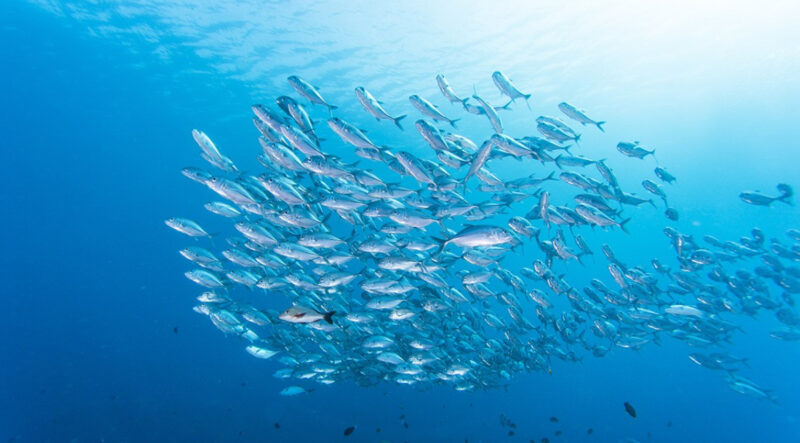America forges ahead with aquaculture while Canada dithers
New aquaculture legislation tabled in the US Senate aims to spur economic growth while conserving ocean environments
By Fabian Dawson
SeaWestNews
America is ramping up offshore aquaculture production with new legislation to increase the growth of sustainable seafood in its federal waters.
A bipartisan bill – Advancing the Quality and Understanding of American Aquaculture (AQUAA) Act, – was recently introduced in the US Senate to create opportunities for new American jobs in a sector described as ‘the most environmentally friendly means of protein production.’
“The expansion of American aquaculture is an opportunity for federal lawmakers to address some of the most critical challenges we face, including climate, economic, and food security,” said Sarah Brenholt, campaign manager of Stronger America Through Seafood (SATS). “Establishing an offshore aquaculture industry would spur economic growth and create new jobs at a time when we need it most.,” she said.
The new legislation introduced by Sens. Roger Wicker (R-MS), Brian Schatz (D-HI) and Marco Rubio (R-FL) would establish National Standards for offshore aquaculture and clarify a regulatory system for the farming of fish in the U.S. exclusive economic zone (EEZ).
The bill, in its third version, would also establish a research and technology grant program to fund innovative research and extension services focused on improving and advancing sustainable domestic aquaculture.
“Aquaculture is the fastest growing food production sector, but the U.S. lacks a comprehensive, nationwide system for permitting in federal waters,” said Senator Wicker. “This deficiency prevents the development of aquaculture farms, leading to more seafood imports. Our legislation would establish national standards for offshore aquaculture, enabling U.S. producers to create jobs and meet the growing demand for fresh, local seafood.”
“Marine aquaculture presents an enormous opportunity for Florida’s economy and for the food security of our nation,” Senator Rubio said.
“Unfortunately, the absence of a federal permitting and regulatory framework has hindered American aquaculture industries. This bipartisan legislation would establish a transparent permitting process and provide regulatory certainty for this important industry to promote new domestic seafood supply chain.
The U.S. has the ninth-largest coastline in the world but currently ranks 16th in the production of farm-raised seafood. It currently imports at least 85% of its seafood, about half from aquaculture in other countries.
A study recently released by Freedonia Focus Reports said US aquaculture production is forecast to expand 5.7% annually in nominal terms through 2025.
“Consumers will also continue turning to farmed seafood in response to concerns about overfishing of wild stocks. Ongoing adoption of recirculating aquaculture systems (RAS) and continued experimentation with aquaculture of different species will also help grow the industry,” it said.
The Washington, D.C.-based Consortium for Ocean Leadership (COL) estimates that the new legislation will lead to a doubling of U.S. aquaculture production to about 1 million tons and create an additional 50,000 direct and indirect jobs, assuming 20 direct jobs per 1,000 tons of seafood produced, and five jobs per 1,000 tons in equipment, feeds, processing, marketing, and food service.
These jobs could provide stable, year-round employment opportunities in coastal and historic fishing communities where opportunities are often limited and seasonally dependent, COL said.
While America moves ahead to boost maritime aquaculture operations, it’s a different story in Canada.
Canada remains the world’s only major farmed seafood producing country without modern national legislation specifically designed to govern a responsible and sustainable industry.
The country’s seafood farming industry generates an estimated $5.16 billion in economic activity and 25,000 full-time jobs for Canadians.
But Canada’s aquaculture production has stagnated since 2001, with an average annual growth rate of about 1% from 2002 to 2019.
“Other nations, recognizing the opportunity, have moved quickly ahead. Over the same time period our share of world aquaculture production has fallen by 54%,” said Tim Kennedy, President & CEO of the Canadian Aquaculture Industry Alliance (CAIA).
The Alliance is urging Canada’s newly appointed Fisheries Minister, Joyce Murray, “to take a number of actions to provide an important signal to renew confidence in the future and unleash frozen capital that is waiting to be invested in communities and innovation.”
Her predecessor, Bernadette Jordan, bowing to demands from anti-aquaculture activists, especially on Canada’s west coast, had ordered the shutdown of salmon farms in British Columbia’s Discovery Islands.
She ignored her own scientists, who found that the Discovery Island farms posed less than a minimal threat to wild stocks and rebuffed her deputy minister, Timothy Sargent, who recommended a more coordinated approach for the decommission of salmon farms in the area.
The Discovery Islands’ decision will see British Columbia losing almost $390 million in annual economic output with $87 million less in annual salaries and benefits, and 1,535 fewer jobs, mainly in rural, coastal and indigenous communities.
Last week, Mowi Canada West, announced it was shuttering one of its hatcheries as a direct result of the Discovery Islands decision. Seventeen people lost their jobs.
Mowi and other affected companies in British Columbia are currently in Federal Court for a Judicial Review of the Discovery Islands decision, which was primarily pushed for by anti-salmon farming activists.
Prior to the Discovery Islands decision, BC’s salmon farmers said they were ready to lead Canada’s post-pandemic recovery by directly investing $1.4 billion in innovation, new technology and infrastructure. The investments through 2050 would create almost 10,000 new jobs and add a cumulative $44 billion in new economic activity to propel Canada’s Blue Economy.
(Image courtesy of Innovasea)

